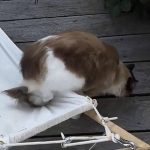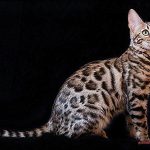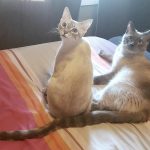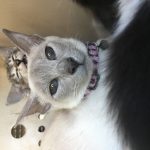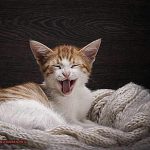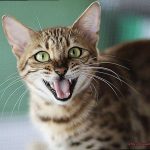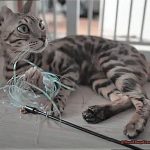Welcome to our blog post where we delve into the fascinating question of whether Maine Coons, those regal and fluffy feline wonders, actually enjoy being touched.
We all find ourselves mesmerized by their striking looks and gentle demeanor, but it’s crucial to understand their personal preferences when it comes to physical contact. As devoted cat enthusiasts, we’re well aware that some kitties absolutely adore a good head scratch, while others prefer to maintain a bit of distance.
But what about our Maine Coon pals? Are they avid snugglers or do they lean more towards an independent streak?
So, grab yourself a warm cuppa and let’s uncover the secrets behind our fluffy friends’ tactile inclinations.
Do Maine Coons like to be touched
Maine Coons are known for their friendly and affectionate nature, but it is important to understand that each cat has its own preferences when it comes to being touched. Just like humans, cats have unique personalities and individual likes and dislikes. So, while many Maine Coons do enjoy being touched and petted, it is crucial to approach them respectfully and pay attention to their boundaries.
Understanding Body Language
One of the key factors in determining whether a Maine Coon enjoys being touched is observing their body language. Signs of enjoyment include purring, kneading, relaxed posture, and a soft gaze. On the other hand, signs of discomfort or dislike may include hissing, growling, swatting, or attempting to escape. It is essential to respect these signals and stop touching if your cat shows signs of distress.
Common Touch Preferences
Many Maine Coons enjoy gentle petting and being stroked along their back, chin, and cheeks. These areas are often referred to as their “happy spots.” However, it is crucial to be gentle and avoid sensitive areas such as the belly or tail, as some cats may be more sensitive in these areas. Some Maine Coons may also enjoy having their ears gently scratched or their belly rubbed, but it is important to approach these areas with caution as not all cats appreciate such gestures.
Respecting Boundaries
Maine Coons have a reputation for being tolerant and patient, which makes them more likely to tolerate being touched for longer periods compared to other cat breeds. However, it is still important to respect the boundaries of your cat and avoid overstimulation. Some Maine Coons may have specific areas that they do not like to be touched or have a limited tolerance for prolonged touching sessions. Each cat’s preferences can vary, so it is crucial to spend time observing and understanding your individual cat’s likes and dislikes.
Grooming as a Touch Opportunity
Regular grooming sessions can provide an opportunity for touch and bonding with your Maine Coon. Most Maine Coons have long hair that requires regular brushing, which can be a pleasant experience for both the cat and the owner. Introduce grooming gradually and make it a positive experience for your cat by using treats or praise. This way, you can build trust and strengthen the bond between you and your Maine Coon.
Understanding Your Maine Coon’s Personality
Maine Coons are amazing cats with unique personalities, and understanding their preferences for being touched can help strengthen your bond. In this article, we’ll dive into the world of Maine Coon body language and provide expert insights to help you decipher their touchy-feely desires.
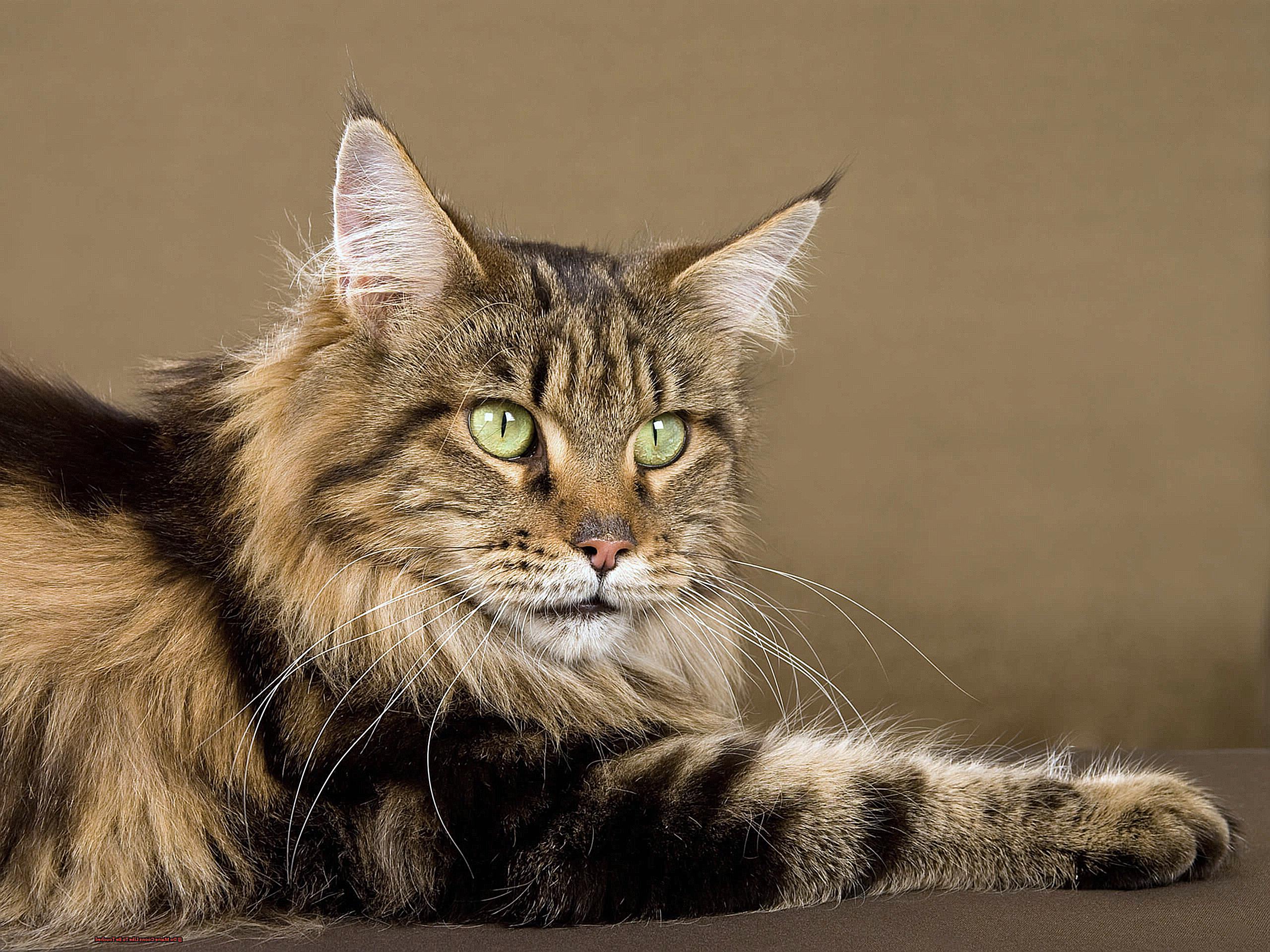
The Social Butterfly:
Maine Coons are generally social cats who enjoy human company. They often seek attention and affection, showing their love by rubbing against your legs or purring loudly. These are clear signs that they enjoy physical contact and being touched.
Respect Their Independence:
While Maine Coons are affectionate, they also value their personal space. Just like dogs, they may sometimes prefer alone time or their own little nook. It’s crucial to respect their boundaries and not force physical contact when they seem uninterested or uncomfortable.
Body Language Clues:
Observing your Maine Coon’s body language is key to understanding their touch preferences. If they approach you and rub against your hand or leg, it’s a green light for petting and cuddling. Purring or kneading with their paws are additional signs of contentment and enjoyment.
Signs of Discomfort:
On the other hand, if your Maine Coon avoids physical contact, hides, or displays signs of stress like hissing, growling, or swatting, they’re telling you they need some space. Some cats may be more sensitive to touch or have had negative experiences in the past, affecting their comfort level with being touched.
Playtime Alternatives:
Maine Coons have a playful side, so if your cat seems less interested in being touched but enjoys playtime with toys or interactive games, use this as an opportunity to engage and bond with them. It’s an alternative way for them to feel connected without direct physical contact.
In conclusion, understanding your Maine Coon’s personality and observing their body language are crucial in deciphering their touch preferences. Respect their boundaries, provide them with space when needed, and offer alternative ways to interact and bond. Remember, each Maine Coon is unique, so take the time to understand what makes your furry friend purr with delight.
Signs That Your Maine Coon Enjoys Being Touched
Majestic, playful, and oh-so-cuddly. If you’re lucky enough to have one of these gentle giants in your life, you know that their love for physical affection is as big as their fluffy tails. But how can you tell if your Maine Coon is truly enjoying being touched? Let me be your guide on this feline adventure.
Purr-fectly Content
When your Maine Coon purrs loudly while you’re petting them, it’s a sure sign that they’re loving every second of it. Purring is their way of saying, “Hey, keep going. This feels amazing.”
Kneading Their Love
You’ve probably experienced it before – those gentle massages or kneading motions that your Maine Coon does with their paws. This behavior is a clear indication that they are comfortable and happy in your presence.
Lean On Me
Has your Maine Coon ever leaned into your touch or rubbed against you when you’re petting them? That’s their way of showing affection and seeking more physical contact. It’s like they’re saying, “I love this so much, I want more.”
Stretching Out the Love
Watch out for those moments when your Maine Coon stretches out or rolls over while being touched. This behavior is a sign of trust and comfort, indicating that they are thoroughly enjoying the sensation.
Drooling with Pleasure
Okay, this one might sound a bit strange, but some Maine Coons may drool a little when they are being petted. Don’t worry – it’s not because they’re bored or annoyed. It’s actually a sign of extreme pleasure and relaxation. Take it as a compliment.
Body Language Clues
Keep an eye on your Maine Coon’s body language while you’re touching them. If their tail is relaxed, their ears are forward, and their eyes are half-closed, it means they are enjoying the interaction. On the other hand, if their tail is twitching or their ears are flattened, it might be a sign that they’ve had enough for now.
Headbutts and Nudges
You know your Maine Coon loves being touched when they give you gentle headbutts or nudge you with their noses. It’s their way of showing affection and wanting more physical contact with you. Soak up the love.
Seeking Out Your Touch
Some Maine Coons will actively seek out physical contact by coming to you and sitting on your lap or curling up beside you. It’s their way of saying, “I want to be close to you, and I love your touch.” Embrace these cuddle sessions.
How to Pet a Maine Coon Properly
In this article, we’ll explore the ins and outs of petting a Maine Coon and provide you with some helpful tips to build trust and a strong bond with your furry friend.
Approaching Your Maine Coon
Maine Coons are sensitive creatures, so it’s important to approach them calmly and gently. Sudden movements or loud noises can startle them, so take your time and approach slowly and quietly. This will help your Maine Coon feel at ease in your presence.
Allowing Your Maine Coon to Sniff Your Hand
Before attempting to touch your Maine Coon, give them a chance to sniff your hand. This allows them to become familiar with your scent and feel more comfortable around you. It’s a small gesture that can go a long way in building trust.
Focus on the Right Areas
When it comes to petting a Maine Coon, it’s important to focus on areas they enjoy being touched. These typically include the head, chin, cheeks, and behind the ears. Use slow and soft motions when stroking these areas. Pay attention to your cat’s body language – if they lean into your hand or purr, it’s a sign they’re enjoying the attention.
Avoid Sensitive Areas
Not all cats appreciate being touched in certain areas, and Maine Coons are no exception. Avoid touching their belly or tail unless you know they enjoy it. Some cats find these areas sensitive or vulnerable, so it’s best to respect their boundaries.
Grooming With Care
Maine Coons have long fur that requires regular grooming. Use gentle strokes while grooming them to avoid causing discomfort or pulling on their fur. Make it a positive experience by offering treats or praise during grooming sessions.
Respect Their Boundaries
Always pay attention to your Maine Coon’s body language during petting sessions. If they start twitching their tail, flattening their ears, or trying to move away, it’s a sign they’re uncomfortable and it’s time to stop petting. Respect their boundaries and give them space when needed.
Every Cat is Different
Remember, every Maine Coon is unique and may have different preferences when it comes to petting. Some may enjoy longer strokes, while others prefer shorter and lighter touches. Pay attention to your cat’s reactions and adjust your approach accordingly.
Building Trust Takes Time
Building trust and a bond with your Maine Coon takes time. Be patient and understanding, allowing them to dictate their comfort level with physical contact. If they seem uninterested in being petted at a particular time, give them space and try again later when they are more receptive.
The Benefits of Interactive Play for Maine Coons
Maine Coons are known for their playful nature and love for interactive play. Engaging in playtime activities with your Maine Coon not only provides them with mental and physical stimulation but also strengthens the bond between you and your furry friend.
In this section, we will explore the numerous benefits of interactive play for Maine Coons and why it should be an essential part of their daily routine.
- Physical Fitness: Just like humans, Maine Coons need regular exercise to stay fit and healthy. Interactive play sessions help to keep them physically active, preventing obesity and related health issues. Chasing toys, playing with laser pointers, or engaging in hide-and-seek games are great ways to get your Maine Coon moving and burning off excess energy.
- Bonding Time: Interactive play strengthens the bond between you and your Maine Coon. Spending quality time together during play sessions creates trust and a deeper connection. It’s a chance for you to engage in positive interaction, which can lead to a more harmonious relationship overall.
- Fulfilling Natural Instincts: Maine Coons have a natural hunting instinct, and interactive play allows them to fulfill this instinct in a safe and controlled environment. By providing them with toys that simulate prey, such as feather wands or interactive treat puzzles, you can tap into their natural instincts and provide mental stimulation.
- Behavior Management: Interactive play helps release excess energy in Maine Coons, reducing destructive behavior around the house. Boredom can often lead to unwanted behaviors like scratching furniture or excessive meowing. By engaging in regular play sessions, you can provide an outlet for their energy and reduce the likelihood of these behaviors occurring.
- Mental Stimulation: Playing with interactive toys and engaging in stimulating activities can help prevent boredom in Maine Coons. These intelligent cats thrive on mental challenges, and interactive play provides them with the mental stimulation they need to stay sharp and content. It also reduces the likelihood of behavioral problems arising from boredom.
- Training Tool: Interactive play can be used as a training tool for Maine Coons. By incorporating positive reinforcement techniques during play sessions, you can teach them commands and tricks. This not only provides mental stimulation but also strengthens their obedience skills and enhances their bond with you.
Grooming Tips for Your Maine Coon
Maine Coons, with their majestic appearance and luxurious long fur, are truly a sight to behold. However, maintaining their beautiful coat requires regular grooming. Not only does grooming keep them looking their best, but it also promotes good overall health. In this guide, we’ll share some valuable tips to help you groom your Maine Coon effectively and keep them happy and healthy.
Tip 1: Start Early
One of the keys to successful grooming is introducing your Maine Coon to it at a young age. By starting early, you can help them become accustomed to the process and develop a positive association with grooming. Begin by gently brushing their fur for short periods each day, gradually increasing the duration as they grow older. This will make grooming sessions easier and more enjoyable for both you and your furry friend.
Tip 2: Use the Right Tools
Investing in high-quality grooming tools specifically designed for long-haired cats is essential. A slicker brush with fine, closely spaced bristles is perfect for removing loose hair and preventing mats. Additionally, a wide-toothed comb can help detangle any knots or mats that may have formed. Remember to be gentle while using these tools to avoid causing discomfort to your Maine Coon.
Tip 3: Be Gentle
Maine Coons have a thick double coat that can be sensitive, so it’s crucial to approach grooming with care and gentleness. Avoid pulling or tugging on the fur, as this can cause pain or distress. Instead, use slow and deliberate strokes while brushing or combing their coat, working from the roots to the ends of the hair. This not only prevents matting but also helps distribute natural oils, keeping their fur healthy and shiny.
Tip 4: Focus on Problem Areas
Certain areas of your Maine Coon’s body are more prone to matting than others. Pay special attention to areas behind the ears, under the armpits, and around the tail. These spots may require more frequent brushing to prevent mats from forming. By giving these areas extra care and attention, you’ll ensure that your Maine Coon’s coat stays smooth and tangle-free.
Tip 5: Break It Up
Grooming sessions can be overwhelming for some Maine Coons, especially if they are not used to it. To avoid causing stress or anxiety, break up grooming sessions into shorter, more manageable periods. This will help your cat become accustomed to the process gradually and make grooming a positive experience for both of you.
Respect Your Maine Coon’s Boundaries and Personal Space
As a Maine Coon owner, it is important to understand and respect your cat’s boundaries and personal space. While many Maine Coons are known for their affectionate and social nature, each cat is an individual with their own preferences. Here are some reasons why respecting your Maine Coon’s boundaries is crucial:
- Ensures their comfort and happiness: Just like humans, cats have their own personal space and boundaries. Respecting these boundaries ensures that your Maine Coon feels safe, secure, and comfortable in their environment. It helps build trust between you and your cat, leading to a stronger bond.
- Prevents stress and anxiety: Forcing physical contact or invading your cat’s personal space can cause stress and anxiety. Maine Coons, in particular, are sensitive cats and may become anxious or even aggressive if they feel their boundaries are being violated. By respecting their personal space, you create a calm and stress-free environment for them.
- Promotes positive behavior: When you respect your Maine Coon’s boundaries, you are reinforcing positive behavior. Cats thrive on positive reinforcement, so by giving them the space they need, you are encouraging them to feel more relaxed and confident.
- Avoids potential injuries: If your Maine Coon feels threatened or uncomfortable due to invasion of their personal space, they may react defensively by scratching or biting. By respecting their boundaries, you reduce the risk of injuries to both yourself and your cat.
Tips for Respecting Your Maine Coon’s Boundaries:
- Observe body language: Pay attention to your cat’s body language to understand their comfort level with touch. Signs of discomfort include hissing, growling, swatting, or attempts to move away.
- Offer alternative interactions: If your Maine Coon prefers minimal physical contact, focus on other ways to bond with them such as interactive play sessions, providing a comfortable environment, and offering treats as rewards.
- Educate family members: Teach children and other family members about the importance of respecting the cat’s boundaries and personal space. This ensures a harmonious relationship and prevents any unintentional harm to your Maine Coon.
- Create safe spaces: Provide designated safe spots or hiding places where your Maine Coon can retreat when they need privacy. This helps them feel secure and respected in their environment.
Common Mistakes When Touching a Maine Coon
If you’re lucky enough to share your life with a Maine Coon, you know just how special these gentle giants are. But when it comes to touching and petting them, are you making any common mistakes? Fear not, because I’m here to guide you through the do’s and don’ts of feline affection, ensuring a paw-sitive experience for both you and your majestic Maine Coon.
Don’t be too rough:
Maine Coons may be big and strong, but they still appreciate gentle handling. Avoid rough play or excessive petting that could make them uncomfortable or even cause injury. Remember, they’re cats first and foremost – treat them with the love and respect they deserve.
Watch their body language:
Just like any other cat, Maine Coons have their own subtle ways of telling us how they feel. Keep an eye out for tail flicking, flattened ears, or growling – these signs indicate that your furry friend may not be enjoying the touch. Respect their boundaries and give them space when needed.
Allow them to initiate contact:
Maine Coons are generally sociable cats, but they also value their personal space. Instead of always reaching out to touch them, give them the freedom to approach you on their terms. This way, you’ll build trust and create a stronger bond with your feline companion.
Brush in the right direction:
Maine Coons have a luxurious double coat that requires regular grooming. However, brushing their fur in the wrong direction can be uncomfortable or painful for them. Learn the proper technique for grooming a Maine Coon and follow the natural growth pattern of their fur to keep them looking and feeling their best.
Respect their boundaries:
While Maine Coons may enjoy physical contact, it’s important to recognize when they’ve had enough. Just like us humans, they have their limits. Pay attention to their cues and give them space when they need it. By respecting their boundaries, you’ll create a harmonious environment for both of you.
Building a Strong Bond with Your Maine Coon Through Touch
Maine Coons are known for their friendly and affectionate nature, making them ideal companions for cat lovers. However, building a strong bond with your Maine Coon through touch requires understanding their individual preferences and boundaries. Here are some tips to help you establish a deep connection with your feline friend:
- Start Early and Gradually: Introduce touch to your Maine Coon from an early age. Begin with gentle strokes on their back, chin scratches, and ear rubs. Use a calm and soothing voice to create a positive association with touch. Remember, patience is key in building trust.
- Watch Their Body Language: Pay attention to your Maine Coon’s body language and reactions when you touch them. Signs of enjoyment may include purring, kneading, or leaning into your hand. Conversely, signs of discomfort or stress may include hissing, growling, or trying to escape your touch. Respect their boundaries and adjust your approach accordingly.
- Experiment with Different Touches: Every cat is unique, so try out different types of touch to find what your Maine Coon enjoys the most. Some cats may prefer long strokes along their spine, while others may enjoy gentle massages or belly rubs. Observe their reactions and tailor your touch based on their preferences.
- Use Touch during Playtime: Touch can be an excellent bonding tool during interactive play sessions. Engage in activities like feather wand play or laser pointer games, incorporating gentle touches and petting during breaks. This helps reinforce positive associations between touch and fun experiences.
- 5.Grooming Sessions: Regular grooming sessions not only keep your Maine Coon’s fur clean and healthy but also provide an opportunity for bonding and relaxation. Start with short grooming sessions and gradually increase the duration as your Maine Coon becomes more comfortable.
- Respect Sensitive Areas: Be mindful of any sensitive areas that your Maine Coon may have. Some cats may be more sensitive around their paws, tail, or ears. Avoid touching these areas if it causes discomfort or stress for your cat.
Also Read: Is It Possible For One Cat To Have Fleas And Not The Other
Conclusion
Maine Coons are known for their friendly and affectionate nature, making them a favorite among cat lovers. When it comes to being touched, these majestic felines generally enjoy the attention and physical contact. From gentle strokes on their luxurious fur to soothing massages behind their ears, Maine Coons often relish in the sensation of human touch.
Their large size and sturdy build make them more tolerant of handling compared to smaller cat breeds. They tend to have a laid-back disposition, which means they are usually more receptive to cuddles and petting sessions. Maine Coons often seek out human touch, actively seeking out their owners for affectionate interactions.
However, as with any individual, each Maine Coon has its own unique preferences. Some may prefer shorter bursts of touch while others may enjoy longer snuggle sessions. It’s important to pay attention to your cat’s body language and cues to understand their comfort level and boundaries.
In conclusion, Maine Coons generally appreciate and enjoy being touched by their human companions. Their friendly demeanor and love for physical contact make them delightful pets for those who crave interaction with their furry friends.

